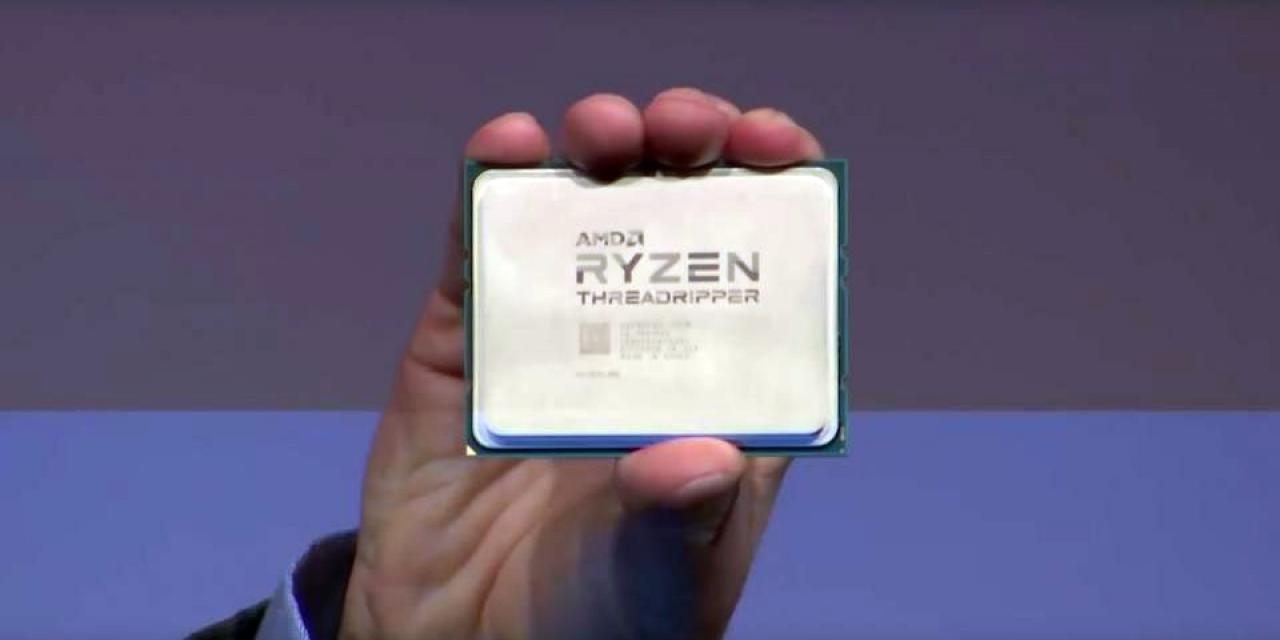
Following its announcement of the ultra-high-end Ryzen Threadripper CPUs earlier this month, AMD has now detailed the specifications of what it has to offer the world when they launch a little later this year. The top end chips should give Intel a run for its money, especially in multithreaded applications, though the slightly lower clock speeds could leave them less competitive in more traditional software.
The line up of processors and their respective specifications are as follows:
- 1998X: 3.5Ghz-3.9GHz, 16/32 cores/threads, TDP of 155w.
- 1998: 3.1Ghz-3.6GHz, 16/32 cores/threads,TDP of 155w.
- 1977X: 3.5Ghz-4.0GHz, 14/28 cores/threads,TDP of 155w.
- 1977: 3.2Ghz-3.7GHz, 14/28 cores/threads,TDP of 140w.
- 1976X: 3.6Ghz-4.1GHz, 12/24 cores/threads,TDP of 125w.
- 1956X: 3.2Ghz-3.8GHz, 12/24 cores/threads,TDP of 125w.
- 1956: 3.0Ghz-3.7GHz, 12/24 cores/threads,TDP of 125w.
- 1955X: 3.6Ghz-4.0GHz, 10/20 cores/threads,TDP of 125w.
- 1955: 3.1Ghz-3.7GHz, 10/20 cores/threads, TDP of 125w.
All chips make use of simultaneous multithreading to enable the doubling of threads with virtual cores, while the X versions also support AMD's extended frequency range feature, which allows for automated overclocking depending on cooling potential. It's possible that that will take most of these chips well above 4GHz.
That could be needed too, as most of Intel's top of the line, upcoming Xtreme edition processors head into the middling 4GHz range, which could give them an advantage in gaming and single threaded applications.
However, it's unlikely that many people will be using this hardware for those sorts of applications. Indeed, this number of cores and threads is more useful for heavy video and photo editing tasks. That's where AMD should really excel (thanks Hexus).
It could all end up depending on the price though. If AMD can keep these chips under $1,000 each, it could become the new CPU king in 2017.
Image source: AMD/Forbes






